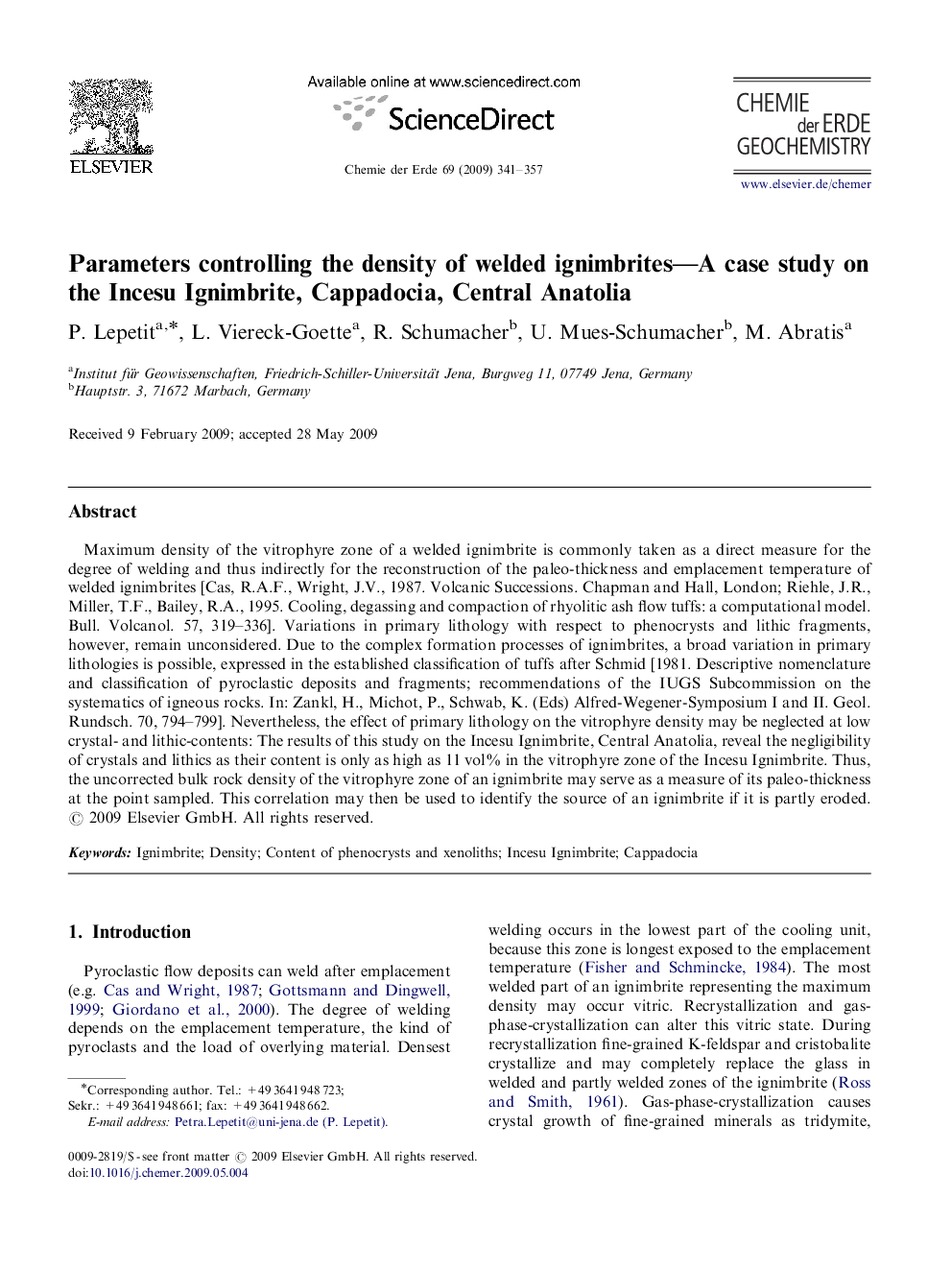| Article ID | Journal | Published Year | Pages | File Type |
|---|---|---|---|---|
| 4407133 | Chemie der Erde - Geochemistry | 2009 | 17 Pages |
Maximum density of the vitrophyre zone of a welded ignimbrite is commonly taken as a direct measure for the degree of welding and thus indirectly for the reconstruction of the paleo-thickness and emplacement temperature of welded ignimbrites [Cas, R.A.F., Wright, J.V., 1987. Volcanic Successions. Chapman and Hall, London; Riehle, J.R., Miller, T.F., Bailey, R.A., 1995. Cooling, degassing and compaction of rhyolitic ash flow tuffs: a computational model. Bull. Volcanol. 57, 319–336]. Variations in primary lithology with respect to phenocrysts and lithic fragments, however, remain unconsidered. Due to the complex formation processes of ignimbrites, a broad variation in primary lithologies is possible, expressed in the established classification of tuffs after Schmid [1981. Descriptive nomenclature and classification of pyroclastic deposits and fragments; recommendations of the IUGS Subcommission on the systematics of igneous rocks. In: Zankl, H., Michot, P., Schwab, K. (Eds) Alfred-Wegener-Symposium I and II. Geol. Rundsch. 70, 794–799]. Nevertheless, the effect of primary lithology on the vitrophyre density may be neglected at low crystal- and lithic-contents: The results of this study on the Incesu Ignimbrite, Central Anatolia, reveal the negligibility of crystals and lithics as their content is only as high as 11 vol% in the vitrophyre zone of the Incesu Ignimbrite. Thus, the uncorrected bulk rock density of the vitrophyre zone of an ignimbrite may serve as a measure of its paleo-thickness at the point sampled. This correlation may then be used to identify the source of an ignimbrite if it is partly eroded.
